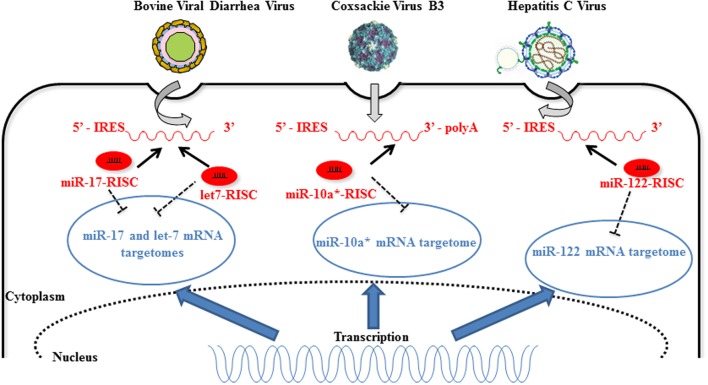FIGURE 2.
Host miRNAs directly improve RNA virus replication. Direct interaction of 3′ end- bovine viral diarrhea virus (BVDV), 3D-coding of region Coxsackie virus B3 (CVB3), and 5′-IRES of hepatitis C virus (HCV) RNAs with host miR-17, let-7, miR-10a-3p, and miR-122, respectively, increases viral replication (dark arrows). The unusual interaction between host miRNA and increasing amounts of viral RNA during replication implies a diminution of the interaction of the host miRNA with its cellular targets (“sponge effect”) (dark dotted inhibition arrows). MiR-10a-3p targets mRNAs implicated in temozolomide resistance (Ujifuku et al., 2010) indicating that miR-10a-3p is not only a passenger miRNA but has a functional role in the cells [image source for CVB3 (Luo et al., 2010) and HCV (Lindenbach and Rice, 2013)].

